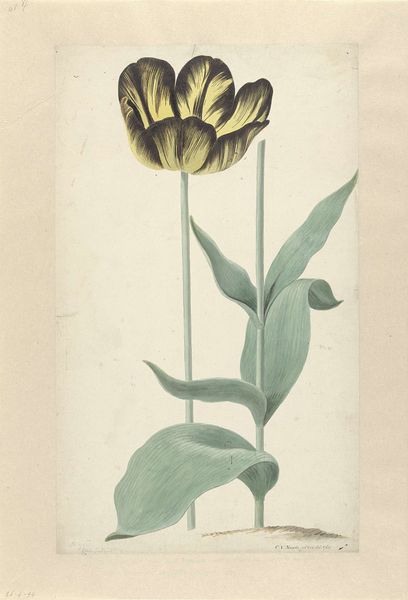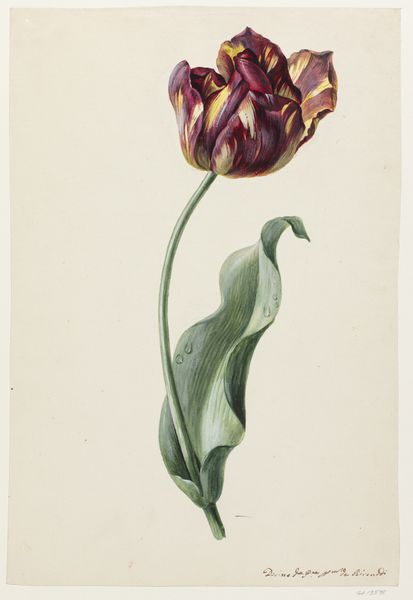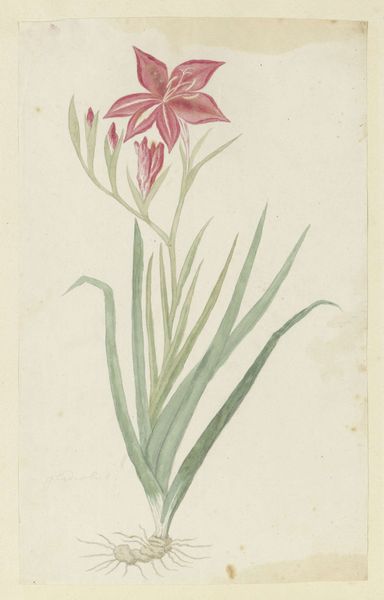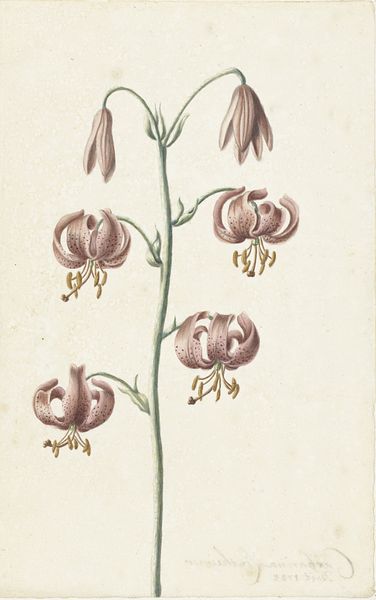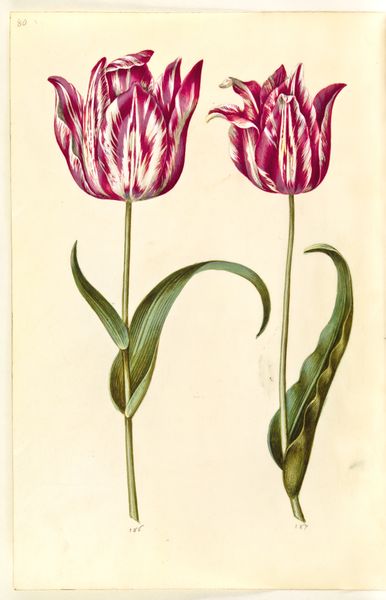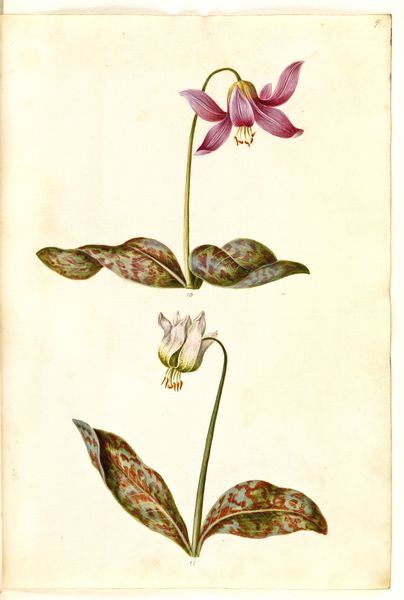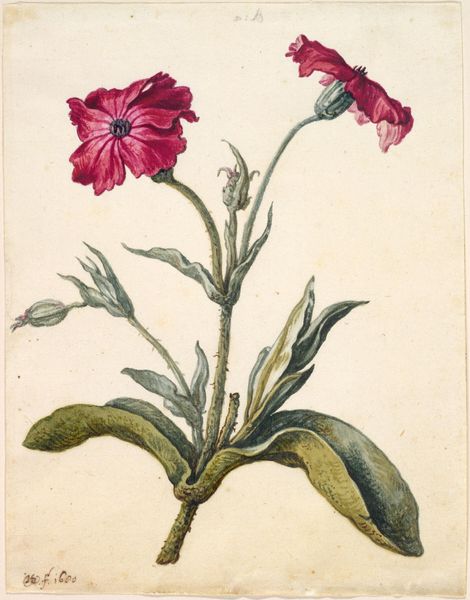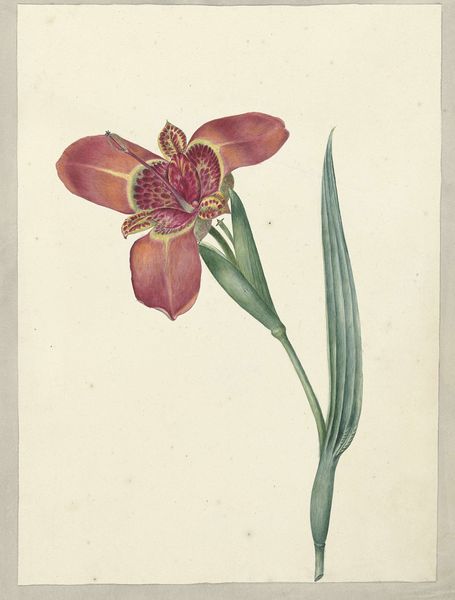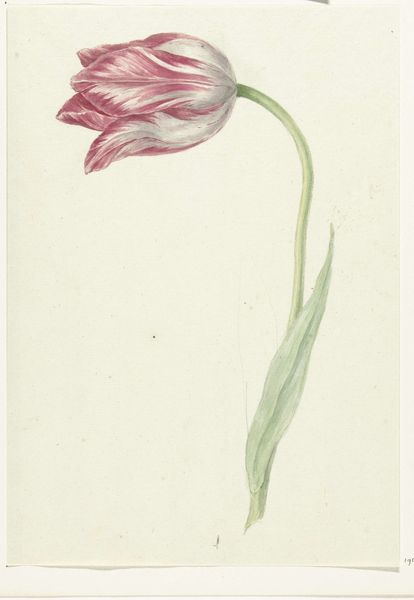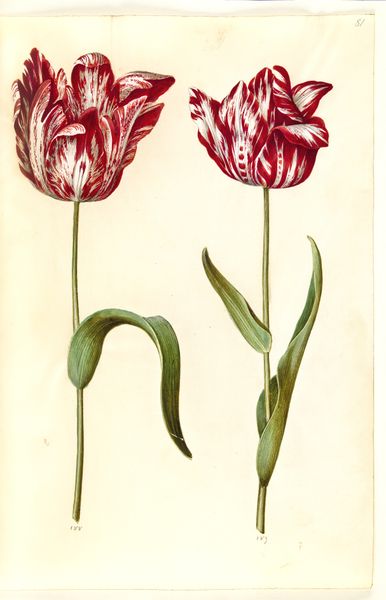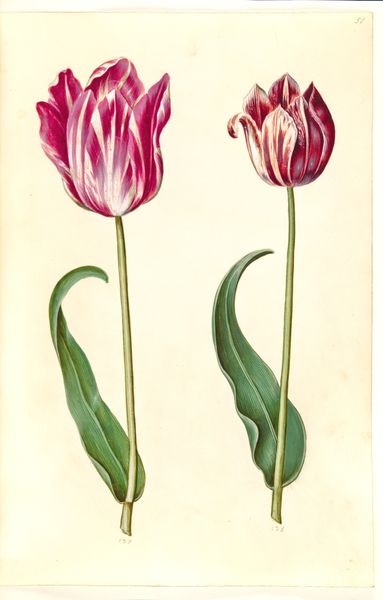
drawing, watercolor
#
drawing
#
watercolor
#
plant
#
watercolour illustration
#
botanical art
Dimensions: height 231 mm, width 171 mm
Copyright: Rijks Museum: Open Domain
Curator: Looking at "Bloem van de pioenroos," created between 1700 and 1800, I am immediately struck by its delicate watercolor rendering of a peony. There's something so tender and almost reverential in the artist's hand. Editor: I see what you mean, but what initially captures me is the paper itself, that creaminess suggesting a specific paper making tradition and likely a laborious hand process in preparing it for the watercolour application. Curator: Absolutely, and understanding that process really shapes our understanding of the piece. Thinking about botanical art within its socio-political context, these detailed studies often served as tools for scientific advancement and colonial exploration. They became vital records. Editor: And they are directly tied to labour and resource extraction, both human and natural, for making paint itself - all those pigments mined and traded, ground down by hand. The intensity of the burgundy implies careful preparation and skillful application. Curator: I am struck by the artist's rendering of the bloom itself. It is in its initial stage of bloom, that can carry potent symbolism; vulnerability, and the feminine spirit caught at the verge of powerful expression. Peonies are tied so closely to narratives of womanhood and resilience in various cultures. Editor: Exactly. It's a material representation of something that, today, may be accessible simply as an image. Here it's an accumulation of work: growing the flowers as well as collecting and making materials into an object. The value placed in those crafts then differs from the quick distribution we see now. Curator: Placing it in that timeframe heightens our understanding too. Think about women in botany. Or perhaps, given it is an unsigned work, the skill passed between a working-class artisan and a more bourgeois patronage system. What this may tell us, even if it doesn't now reflect an explicitly feminist position, still represents their experiences, desires, struggles. Editor: Looking at it now I can't help but reflect that the slow burn craft required and rendered contrasts today. What will endure from the material objects that illustrate now? What skills will endure? Curator: It makes you consider the artwork’s function across time and space; more than the artistic depiction. Its roots go back to the labor involved, and forward to a contemporary dialogue on identity and artistic worth. Editor: Indeed. These observations, they bind us across different contexts to share an idea.
Comments
No comments
Be the first to comment and join the conversation on the ultimate creative platform.
